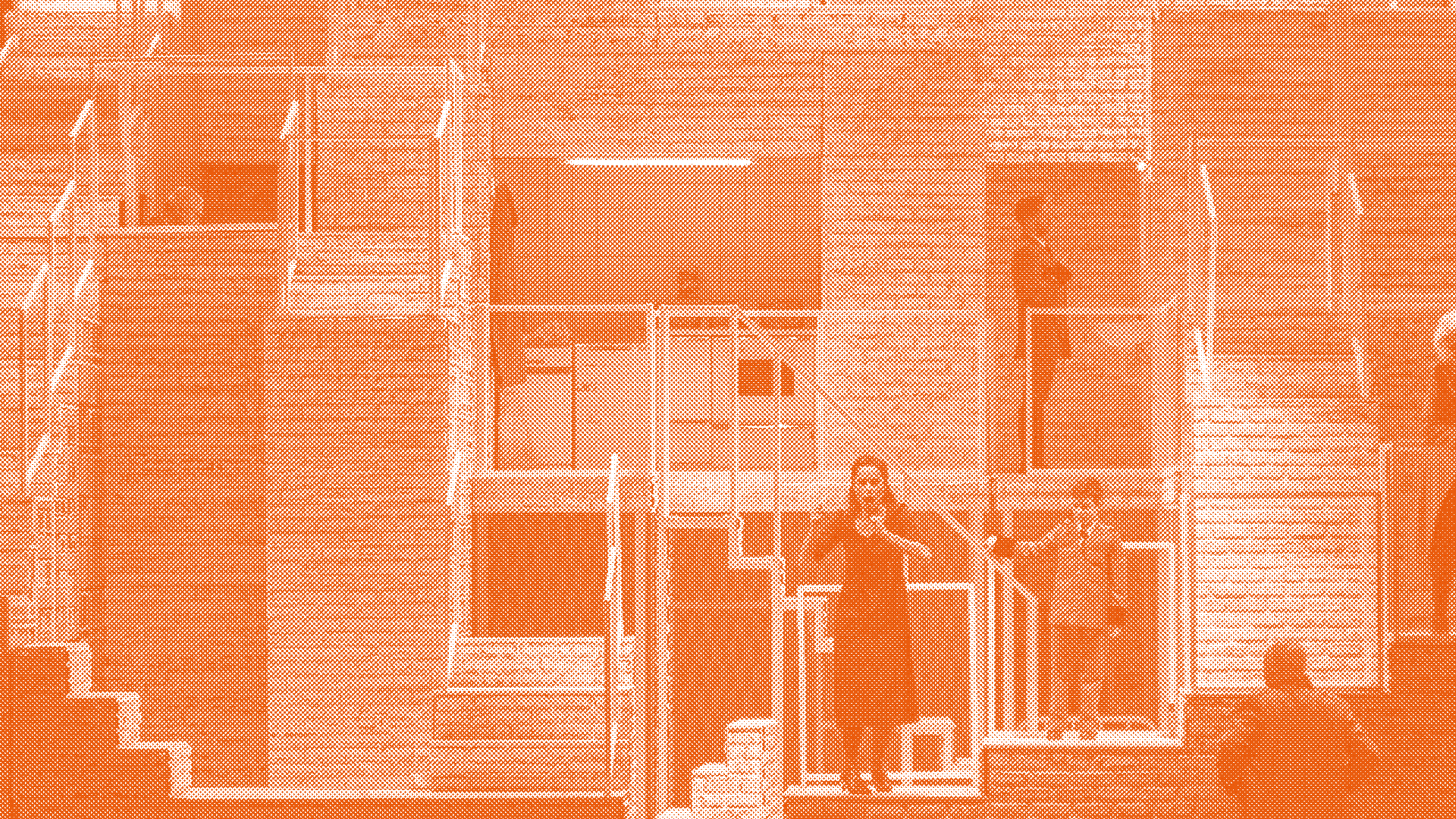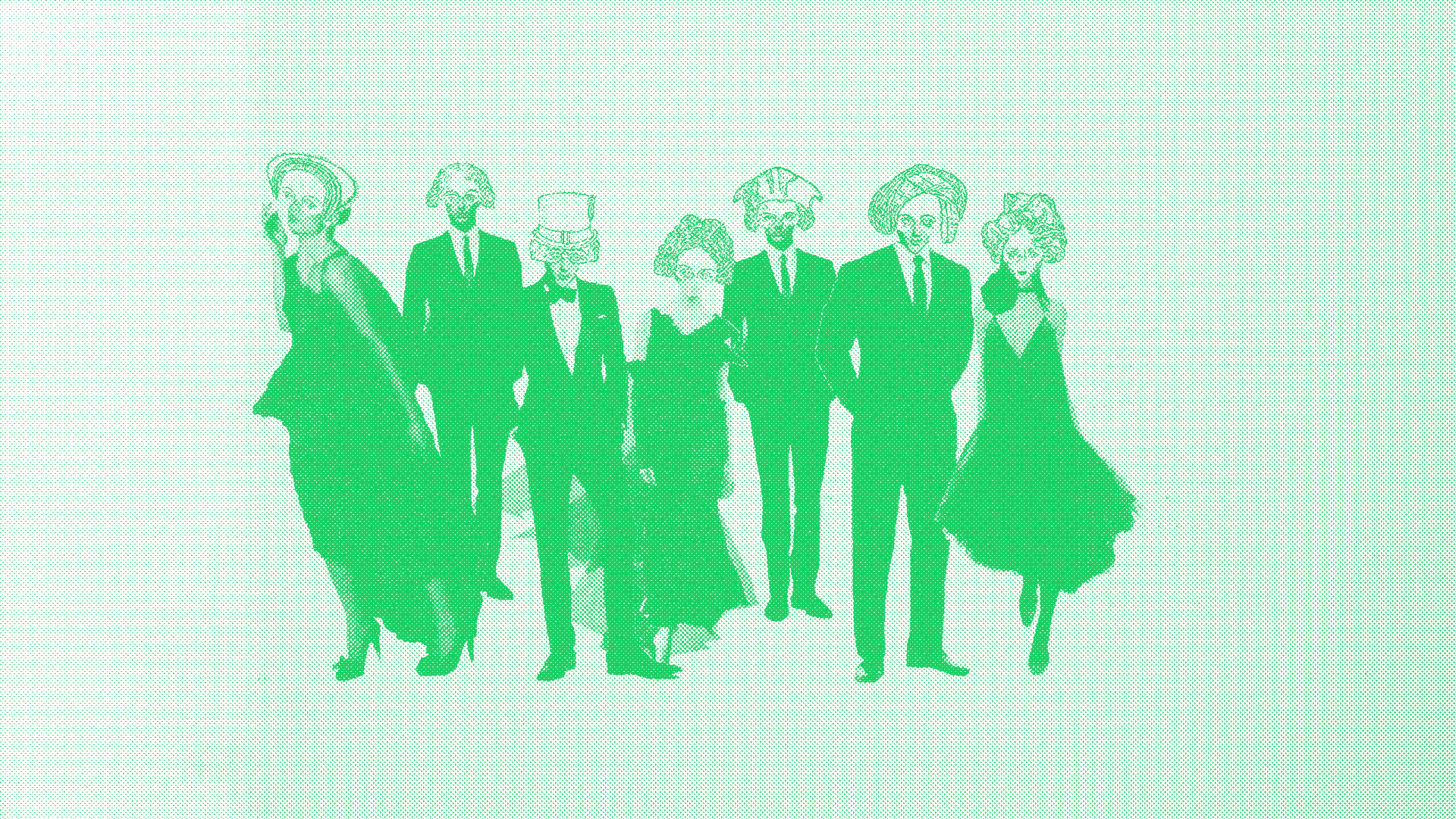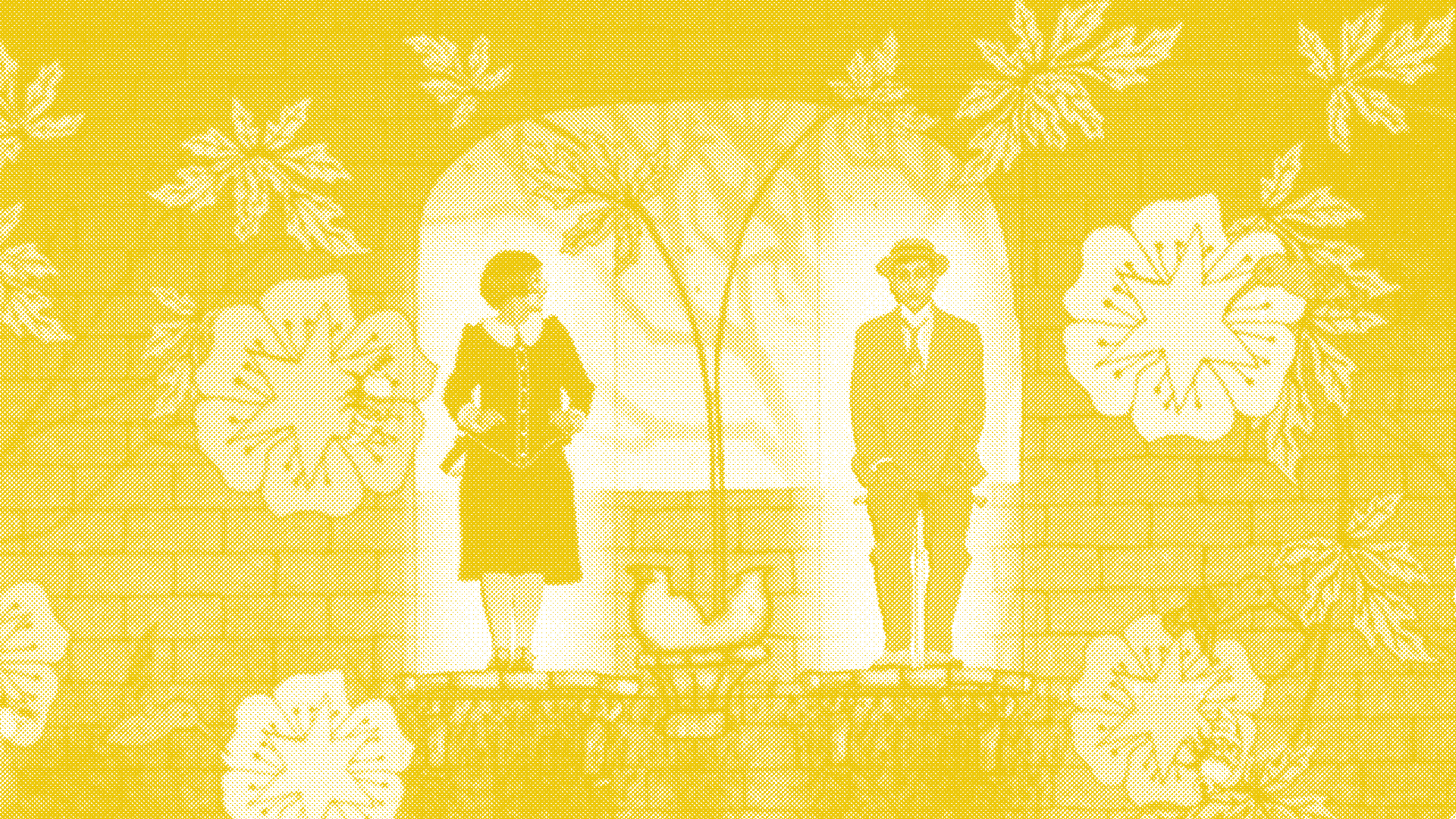
Genres of opera
and opera parts
CHAPTER 1 / INTRODUCTION
In the Genres of opera and opera parts chapter you can get acquainted with the genres frequently encountered in opera, their characteristics, composers and typical works of each genre. Moreover, you can read about the parts an opera consists of, so that the next time you listen to an opera or watch it, you will be able to identify them. Kornilios Selamsis presents the opera genres and the parts of an opera and explains which genre Offenbach’s renowned opera La belle Hélène belongs to.
Composer Kornilios Selamsis presents the opera genres and the parts of an opera and explains which genre Offenbach’s renowned opera La belle Hélène belongs to.
The following texts are written by Artemis Ignatidou.
CHAPTER 2 / GENRES OF OPERA
Do you know what the word “opera” means? Not the kind of music we have been discussing here in general; this you know well by now. The word “opera” is an Italian plural noun, whose literal translation is “works”.
In Greece, where we now use the word ‘opera’ [όπερα] as well, the first word used to describe this art form was ‘melodrama’– literally a (theatrical) drama accompanied by melodies. And the state opera in Athens, which you may know as the “Greek National Opera” in English, is called the “National Lyric Theatre” [Εθνική Λυρική Σκηνή] in Greek because it is an organization that promotes the arts of music and dance. So although we now use the word “opera” to describe a work that combines music with theatre and literature, over the centuries, in different countries, different terms have been used to describe what an opera is. Many of these terms are still used today to describe the style of certain works. For example, in the section ‘Opera in the course of time’, we learned about the emergence of the genre of ‘opera seria’– the ‘serious opera’- in the 18th century. The creators of this genre of opera defined certain compositional and literary rules that made an opera more ‘serious’ than others, and from then on, when an opera following these rules was presented, it fell under the genre of ‘serious opera’.
Below is a brief overview of the genres of opera we saw in the different sections of this platform.
Dramma per musica
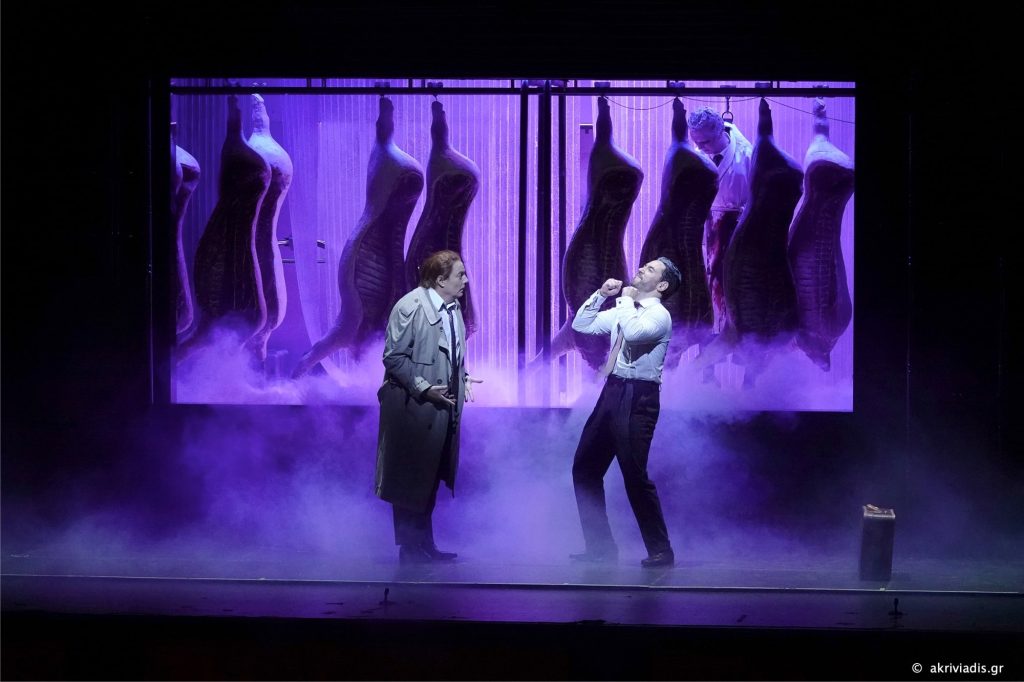
Wolfgang Amadeus Mozart’s Don Giovanni, a coproduction of the GNO with Göteborg Opera (Sweden) and the Royal Danish Opera. Conductor: Daniel Smith; Stage direction: John Fulljames. GNO TV, 2021
An 18th-century term describing a libretto written for an opera with a heroic or serious plot. Today the operas described by this term are included in the genre of ‘opera seria’. Well-known works of this genre include Wolfgang Amadeus Mozart’s Idomeneo and Gioachino Rossini’s Otello. Similarly, the term dramma giocoso refers to the libretto of the opera genre that includes characters from comic opera. Typical examples of this genre include Wolfgang Amadeus Mozart’s Don Giovanni, Gioachino Rossini’s L’italiana in Algeri and Gaetano Donizetti’s L’elisir d’amore.
Other examples of ‘Dramma per musica’
Erismena – Francesco Cavalli
Xerse – Francesco Cavalli
Tito Manlio – Antonio Vivaldi
Il Bellerofonte – Josef Mysliveček
Paride ed Elena – Christoph V. Gluck
Armida – Antonio Salieri
Operetta

Jacques Offenbach’s La vie parisienne Conductor: Andreas Pilarinos, Lisa Xanthopoulou; Stage direction: Giannis Iordanidis; Set & costume design: George Patsas. Olympia Theatre (2003/04).
A term used since the 19th century to describe light opera works with dialogue and dance numbers. As a genre, operetta evolved in the 1850s under the influence of composer Jacques Offenbach. In Greece, the first operetta ever staged was the French La vie Parisienne [Parisian Life] in 1871, while composers Theofrastos Sakellaridis, Spyros Samaras and Nikos Hatziapostolou presented the first Greek operettas in the early 20th century. Typical examples of the genre include Offenbach’s La Belle Helene, Orphée aux enfers [Orpheus in Hades] and Die Fledermaus [The Bat] by Johann Strauss II.
Other operettas
The Mikado – Arthur Sullivan
Candide – Leonard Bernstein
Daphnis et Chloé – Jacques Offenbach
La Vie parisienne – Jacques Offenbach
Paul Bunyan – Benjamin Britten
The Princess of Sasson – Spyridon Samaras
Sataneri – Theophrastos Sakellaridis
The Godson – Theophrastos Sakellaridis
The first love – Nikos Chatziapostolou
The Apaches of Athens – Nikos Chatziapostolou
Perouzé – Theophrastos Sakellaridis
Grand Opéra
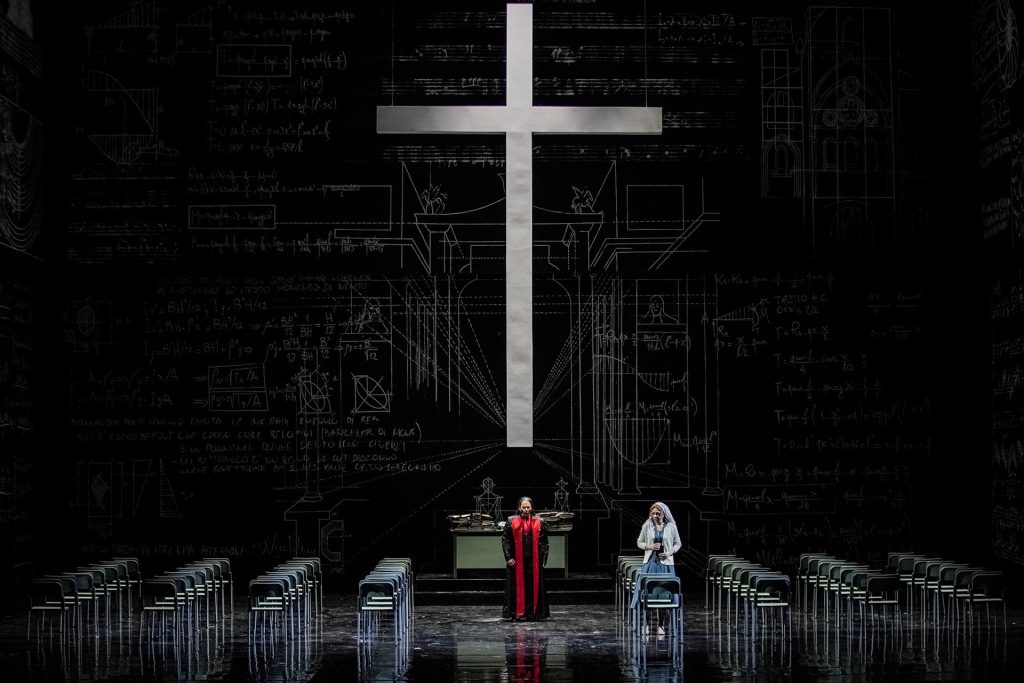
Charles Gounod’s Grand Opéra Faust. Conductor: Pierre Dumoussaud; Director, choreographer, movement coach: Renato Zanella; Set design: Alessandro Camera; Costume design: Carla Ricotti. Stavros Niarchos Hall (2022).
A genre of opera that appeared in France and refers mainly to works written for the Paris Opera between 1820 and 1860. These works had a serious theme describing events of global significance, with a grand stage presentation, a large chorus and orchestra. They were written in French and included ballet. Typical examples of the genre are Guillaume Tell by Gioachino Rossini, The Huguenots by Giacomo Meyerbeer and Les Martyrs by Gaetano Donizetti.
Other works
Aida – Giuseppe Verdi
Les Troyens – Hector Berlioz
Don Carlo – Giuseppe Verdi
Faust – Charles Gounod
Tannhäuser – Richard Wagner
Opera buffa
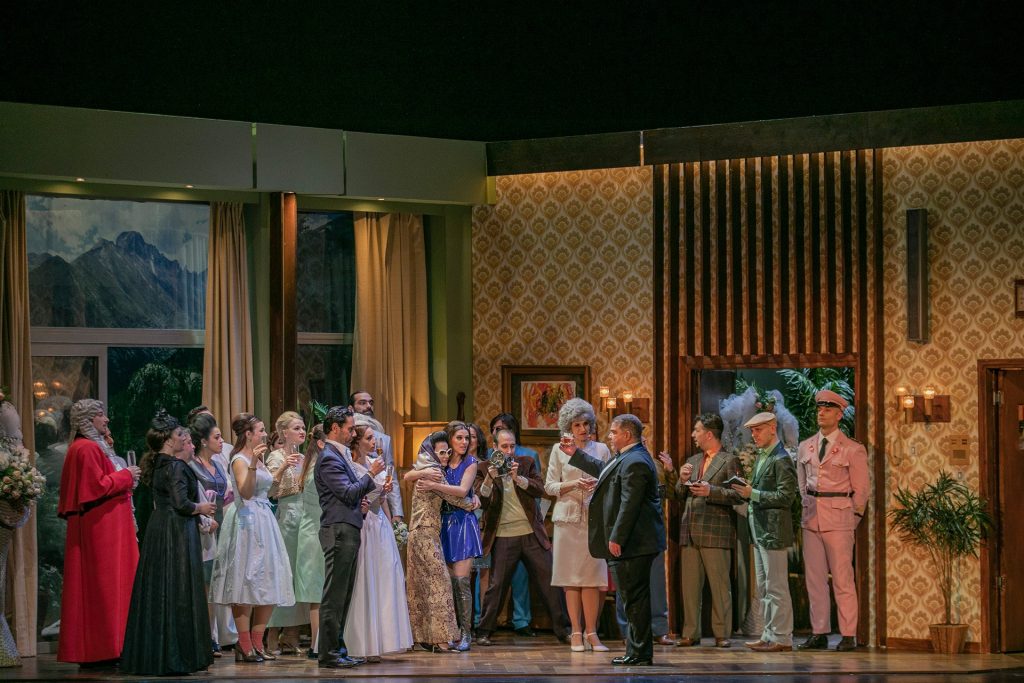
A Greek National Opera production of Wolfgang Amadeus Mozart’s The Marriage of Figaro. Conductor: Vassilis Christopoulos; Director: Alexandros Efklidis (2021).
Comic opera. In Italy the term was used from the 18th century to describe the various types of opera that were comic in nature. In contrast to opera seria, opera buffa was shaped as a genre by presenting stories whose heroes were ordinary people and it made use of everyday language and local idioms. Typical examples of the genre are The Marriage of Figaro [Le nozze di Figaro] by Wolfgang Amadeus Mozart, The Barber of Seville [Il barbiere di Siviglia] by Gioachino Rossini and Don Pasquale by Gaetano Donizetti.
Other works
Il mondo della luna – Joseph Haydn
Don Procopio – Georges Bizet
La gazzetta – Gioachino Rossini
La serva padrona – Giovanni Battista Pergolesi
Mavra – Igor Stravinsky
Ubu Rex – Krzysztof Penderecki
Opéra comique
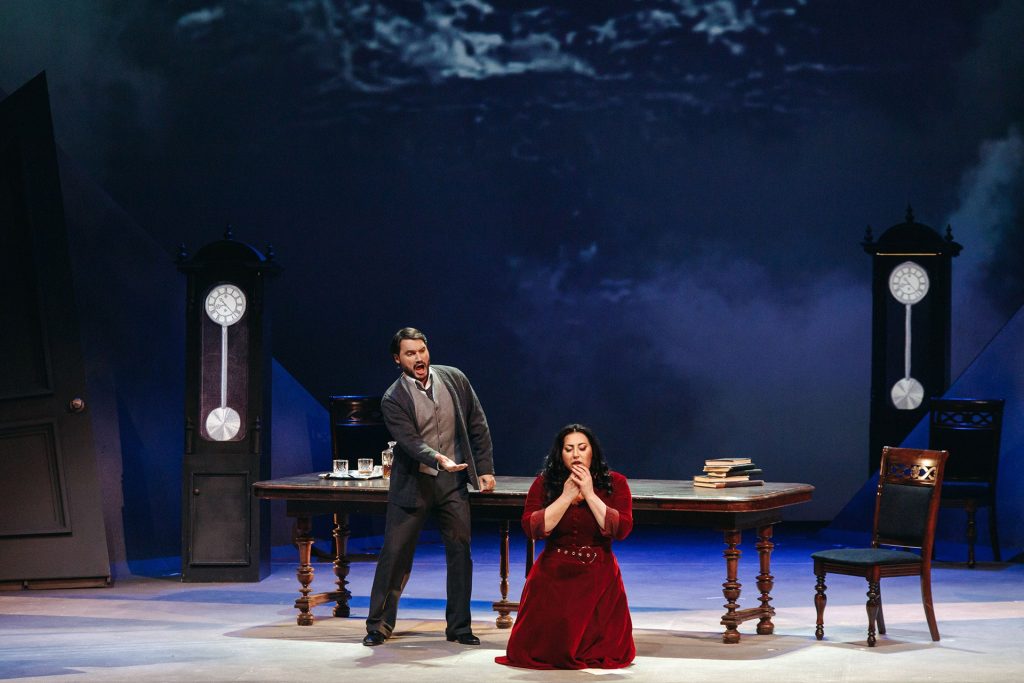
Jules Massenet’s Opéra comique Werther. Conductor: Jacques Lacombe; Director: Spyros A. Evangelatos; Revival director: Ion Kessoulis; Set & costume design: George Patsas; Set and costume design revival: Tota Pritsa. Stavros Niarchos Hall (2023).
French opera genre rooted in vaudeville – satirical musical theatre performances of the 18th century. Opéra comique originally consisted of musical numbers and dialogue of a comic nature, but as time went on and the genre evolved, the term came to signify an opera where the dialogue is recited but is not necessarily satirical or comic in nature. Typical examples of the genre include Daniel Auber’s Fra Diavolo and Georges Bizet’s Carmen.
Other works
Lakme – Leo Delibes
Manon – Jules Massenet
Werther – Jules Massenet
Louise – Gustav Charpentier
Pelleas et Mélisande – Claude Debussy
La Voix humaine – Francis Poulenc
Opera seria
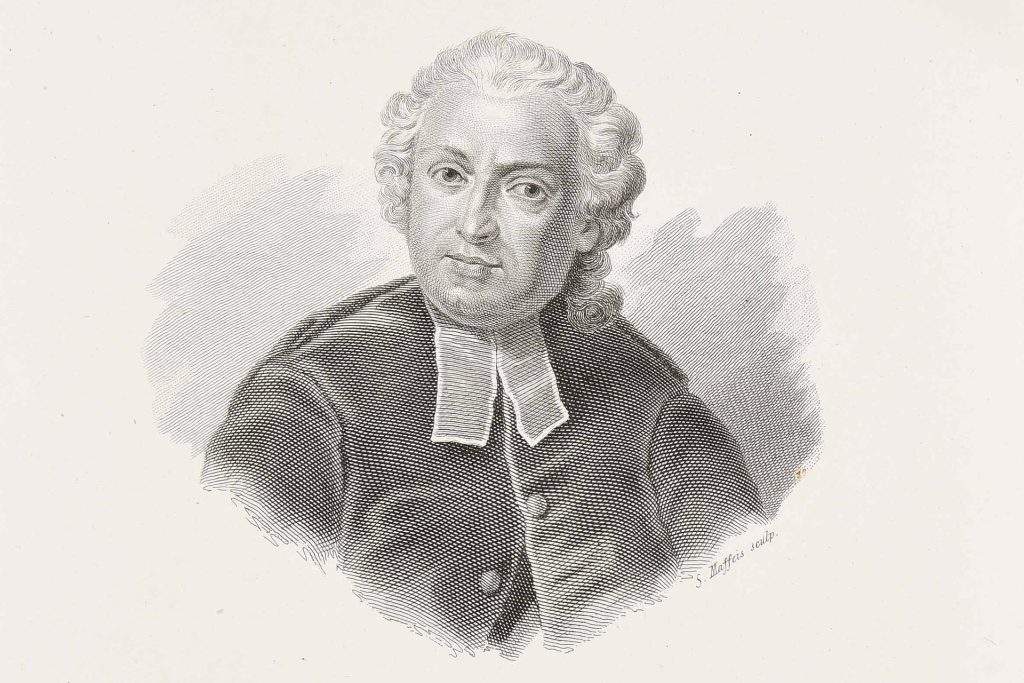
Pietro Metastasio (1698-1782), poet and librettist, closely associated with the emergence of opera seria, Municipal Library of Trento, CC0, via Wikimedia Commons.
A term describing 18th– and 19th– century Italian operas with serious themes. The origins of opera seria are closely associated with the Italian poet and librettist Pietro Metastasio. Opera seria made extensive use of recitativo secco and the da capo aria, its language was complex and poetic, and its themes featured ancient heroes wrestling with moral dilemmas. The most important reformer of the genre is considered to be Christoph V. Gluck, who stopped using the recitativo secco and the da capo aria, he simplified the plot of the works and shortened the choral parts. Important works belonging to the opera seria genre include Didone Abbandonata by Nicola Porpora, Alcina by George Frideric Handel and La clemenza di Tito by Wolfgang Amadeus Mozart.
Other works
Agrippina – George Frideric Handel
Griselda – Alessandro Scarlatti
Idomeneo – Wolfgang Amadeus Mozart
La Cleopatra – Domenico Cimarosa
Temistocle – Johann Christian Bach
Teseo – George Frideric Handel
Singspiel

The Singspiel The Magic Flute by Wolfgang Amadeus Mozart. Conductors: Zoi Tsokanou & Georgios Balatsinos; directors: Suzanne Andrade & Barrie Kosky; revival director: Tobias Ribitzki; animation: Paul Barritt. Stavros Niarchos Hall (2018).
German-language form of 18th-century musical theatre with dialogues instead of recitative parts. Originally they were plays that included popular songs, and their subject matter was usually comic. Under the influence of Wolfgang Amadeus Mozart, who composed works such as Die Zauberflöte [The Magic Flute] and Die Entführung aus dem Serail [The Abduction from the Seraglio] in the Singspiel style, this genre played an important role in the development of German opera.
Other works
Bastien und Bastienne – Wolfgang Amadeus Mozart
Der Schauspieldirektor – Wolfgang Amadeus Mozart
Zaide – Wolfgang Amadeus Mozart
Tragedié Lyrique

Jean-Philippe Rameau (1683-1764), an important reformer of tragedié lyrique, Masquelier , Louis-Joseph (1741-1811). Graveur, Public domain, via Wikimedia Commons.
17th-century French opera genre, introduced by composer Jean-Baptiste Lulli. Its themes were based on myths of classical antiquity and Italian epic poems. The style is influenced by the French theatrical tradition and the French public’s preference for ballet; the music consists of recitative parts accompanied by the full orchestra, and shorter arias. The composer Jean-Philippe Rameau is considered an important reformer of tragedié lyrique, as he gave new life to the genre when it seemed to have declined.
More Works
Alceste – Jean-Baptiste Lulli
Atys – Jean-Baptiste Lulli
Persée – Jean-Baptiste Lulli
Medée – Marc-Antoine Charpentier
Ariane et Bacchus – Marin Marais
Meduse – Charles-Hubert Gervais
Les Boreades – Jean-Philippe Rameau
CHAPTER 3 / THE DIFFERENT PARTS OF AN OPERA
The other night, we came to the opera house to watch a performance and just as the plot thickened, the curtain suddenly fell, the lights came on and the orchestra left the pit. As I was getting ready to leave too, I was told that the play would resume after the intermission.
Much like in the theatre where, once a part of the story is completed the action stops for a while so that we can think about what happened and why, operas are also divided into acts. In each act we watch a number of scenes, that is, we watch the story unfold bit by bit, like the chapters of a book. Once we have watched several scenes and have an idea of what is happening, the act ends and a new act with several scenes begins. In this way, the composer and librettist put their story in order and present it to us so that we can follow it more easily.
As you may have already noticed, there’s a lot going on in every scene of an opera. Set changes, different characters coming and going, and a lot of perspectives on the same story. And because we are talking about opera and not theatre, the singers, actors and dancers involved tell their story through different actions. Below we’ve gathered some keywords from the world of opera so that we can refer back here to remember them and understand better what’s in each scene we watched. I wonder, what is the soprano singing in the second scene of the first act, an aria or a ballet?
Aria
The ‘song’ in opera; in an ‘aria’ the characters’ feelings and thoughts are expressed musically, through melodic songs accompanied by the orchestra. In the Baroque era, the da capo aria was preferred: a type of aria with many repetitions. Later on the cavatina – a short song, without repetitions – and the rondo aria – in which the first part is slow and the second is fast – became popular.
Giacomo Puccini, Tosca, Tosca’s aria, “Vissi d’arte” from the second act. Soloist: Tiziana Caruso, Athens Concert Hall (2010/11).
Ballet
The part of the opera where professional dancers participate. The ballet has been a favourite tradition of French opera since the 17th century, when Italian opera was adapted to the taste of the French aristocracy. These dance parts gave the audience the opportunity to relax while watching something spectacular during the opera, and were also meaningfully connected to the plot.
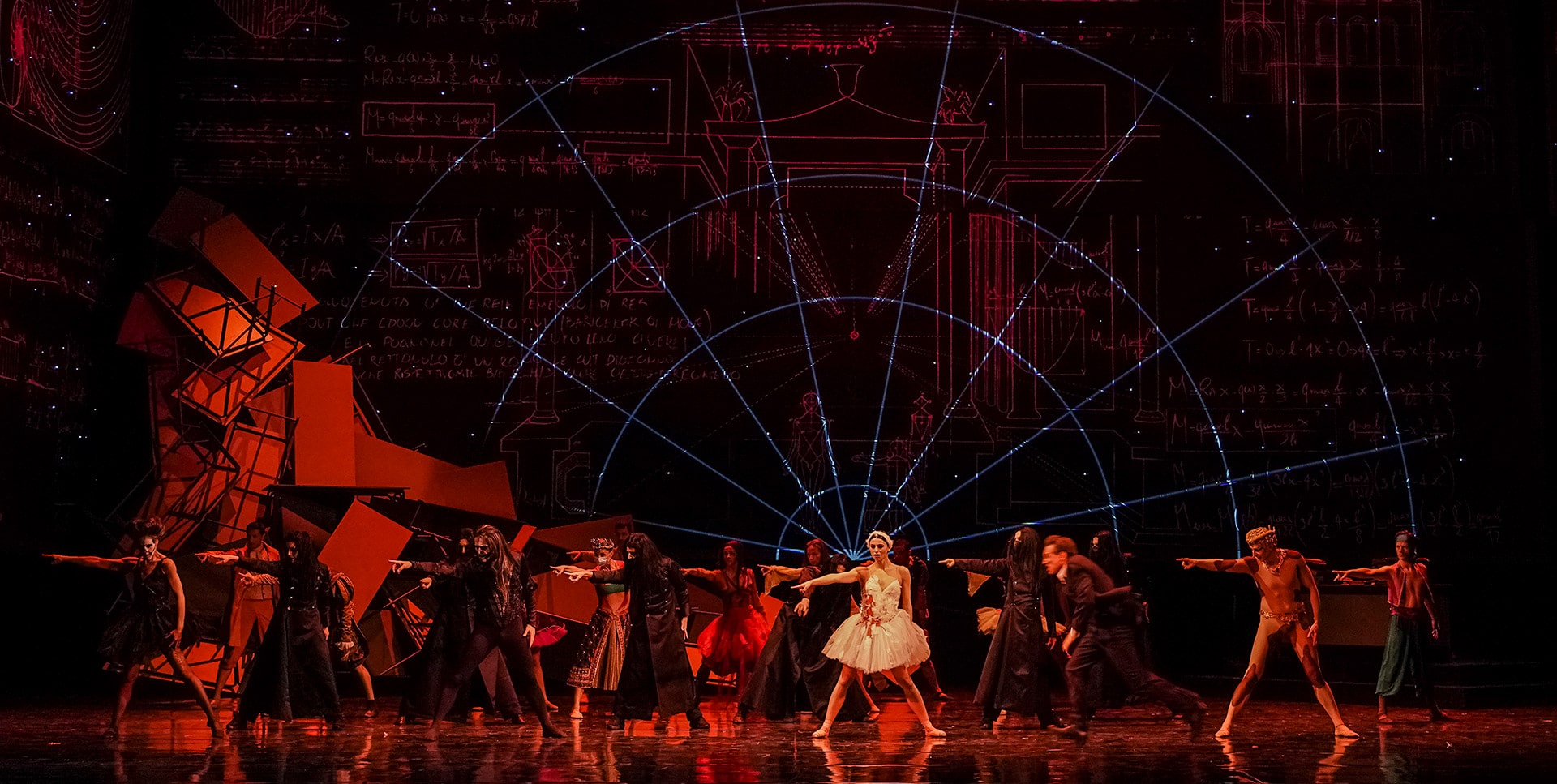
Charles Gounod’s Faust. Conductor: Pierre Dumoussaud; Director, choreographer, movement coach: Renato Zanella; Set design: Alessandro Camera; Costumes: Carla Ricotti. Stavros Niarchos Hall (2022)
Duet
When two singers sing the same aria or a piece of music is written for two instruments. Similarly, depending on the number of singers or instruments involved in a piece of music, there are trios (for three musicians) and quartets (for four musicians).
Gioachino Rossini Don Pasquale, duet of Norina and Dr. Malatesta ‘Pronta io son’, from the first act, Theatro Akropol (2003/04).
Overture
The orchestral introduction of the opera, in which the singers do not participate at all. Like the introduction of a book, the overture gives the audience a first taste of the style of the opera and often contains melodies from other parts of the opera or describes musically some of the characters who will appear later.
Excerpt from the overture to Georges Bizet’s Carmen. Conductor: Lukas Karytinos; stage direction: Stephen Langridge; set & costume design: George Souglides. Odeon of Herodes Atticus, 2015/16
Recitativo
The part of the opera where the characters recite melodically, imitating speech. Unlike arias, where the music dictates the delivery of the text and there are often repetitions, in the recitativo the singers imitate speech and do not repeat the text. Recitativo helps the plot to develop, while arias present the emotional world of the heroes and give the singers the opportunity to show the audience their technical skills. Over the centuries, various styles of recitativo have evolved, but from the 18th century onwards, the recitativo secco – a recitative with a very simple musical accompaniment, where singers have some freedom of improvisation – and the recitativo accompagnato – a lyrical recitative where the orchestra accompanies the singer – have been mainly used.
Giuseppe Verdi Nabucco, Abigaille’s recitativo “Ben io t’invenni”, second act, Olympia Theatre (2006/07).
Choral parts
Those places in an opera where the choir, i.e. a large number of singers singing at the same time, participates. A choir is divided into four voices (soprano, contralto, tenor, bass) and is conducted by the chorus master. In opera, the chorus sings in the scenes where a crowd is present and takes part in the action.
Giuseppe Verdi Il Trovatore, ‘Anvil chorus’ from the second act, Olympia Theatre (2003/04).
Intermezzo
In 18th century opera, intermezzi were comic episodes placed between the scenes of opera seria, to lighten the mood and create emotional contrast. Intermezzi could stand as independent works, whose duration was shorter than the work that included them.
Excerpt from the intermezzo in Giacomo Puccini’s Madama Butterfly. Conductor: Lukas Karytinos; Direction, set design, & costumes: Hugo de Ana, Odeon of Herodes Atticus, 2017
QUIZ / GENRES OF OPERA AND OPERA PARTS
ACTIVITIES / GENRES OF OPERA AND OPERA PARTS
Introduction
As we saw previously, in order to perform a ‘recitativo’ singers imitate speech. And while arias are melodic and usually take a bit of time, in ‘recitativo’ we have a faster recitation of the text without the intense sentimentality of opera. Here we will work on a short extract from the opera Offenbach’s The Beautiful Helen by Kornilios Selamsis and try to create our own recitativo as a group. Then, bringing all the different parts together, we will create a rhythmic performance of the text as a group. What do you think the final version will be? If we recite the text rhythmically as a group, do we have a choral piece?
Connection to the curriculum
– Music
– Ancient Greek
Subjects
– Rhythmic recitation
– Movement and speech
– Opera parts
Suggested teaching hours
1–2 teaching hours
Educational objectives
– Rhythmic education
– Text comprehension
– Vocal development
– Creative development
– Promotion of collaborative practices (in the classroom)
Step 1
For this activity we will work on a short extract from the first act of Offenbach’s Beautiful Helen by Kornilios Selamsis. Before we read the lyrics of the excerpt, let’s take a look at the context:
It’s 8 June 1194 AD, the day of the great feast of Adonis, and kings from all over Greece arrive in Sparta to take part in the Spirit Games. The contestants will compete in 3 sports: a riddle, wordplay and poetry. As usual, only men can take part in the games. In the beginning we have the introduction of the contestants. First is Menelaus, king of Sparta and husband of Helen, then Achilles, young king and leading warrior. Next comes Ajax, also a brave warrior. Suddenly an uninvited shepherd from the crowd requests a place in the games. Despite some protestations, the shepherd’s request is granted and the games begin.
Step 2
Read the following lyrics in class.
What is their meaning?
Can you imagine how this song would sound?
Would it be an aria, a recitativo, a duet, or a choral part?
Intelligence Tournament (from the performance Offenbach’s La belle Hélène)
Agamemnon and Achilles
And king Menelaus are here.
There’s Calchas and Ajax too,
And an uninvited shepherd!
They will compete in a tournament
With their mind as their only weapon.
No seed of sense left in our minds
A country of brainless muscled men
They’ll compete in a tournament
Where only the mind will count
Only the mind will count
Only the mind will count
The brains, the brains
We need great brains
The brains, the brains
We need great brains
The brains, the brains
The tournament requires intelligence
The brains, the brains
We need great brains
The brains, the brains
We need great brains
The brains, the brains
The tournament requires intelligence
Achille is a butcher
Menelaus is slow
Ajax is a big moron
And the Greek people are not any better
Let them compete in the tournament
In the hope that some genius might arise
I want to see the country waking up
I am looking for educated men
To compete in the tournament
Only the mind should count
Only the mind should count
Only the mind should count
The brains, the brains
We need great brains
The brains, the brains
We need great brains
The brains, the brains
The tournament requires intelligence
The brains, the brains
We need great brains
The brains, the brains
We need great brains
The brains, the brains
The tournament requires intelligence
Step 3
Each student should choose one verse to recite or sing. As in most groups there will be more students than verses, two students can choose the same verse.
Establish a common, steady beat by using a metronome or a percussive instrument and help students join it.
When the common pulse is established and integrated, students form a circle and recite one after the other, rhythmically the verse they have chosen.
Repeat the rhythmic recitation until there is a continuous flow of text.
Step 4
Through a class discussion choose the desired way of reciting the text.
Continue the activity by having the whole class learn to perform the rhythmic recitation together.
Try to synchronize rhythmically as best as possible. How do you understand the piece you recited together? If it were part of an opera, would it be a ‘recitativo’ or a choral piece?

